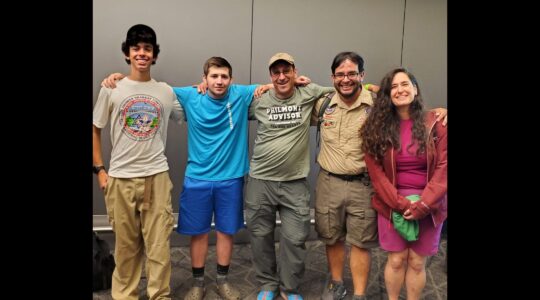JERUSALEM, Aug. 17 (JTA) — One of Zionism’s founding fathers offered this now-classical vision of the longed-for independent Jewish society: “Jewish thieves and Jewish prostitutes.” In other words, the panoply of life, complete with its seamier sides, was envisioned in a normal Jewish state. To judge from life here these days, Israel has achieved that dream — in spades. Assaults, rapes and murders in Israel have captured the attention of both the media and government policy-makers, who are trying to figure out what needs to change in the educational system to put the brakes on this culture of violence. Here’s a cursory, if chilling, review of one evening’s TV news this week: * In Beersheba, a 14-year-old boy admitted, and replayed for police video cameras, repeatedly sodomizing another boy and girl. His father was shown, weeping and distraught, brandishing his son’s excellent report cards outside the courthouse. * Near Haifa, a 14-year-old boy was arrested for allegedly raping three children, one 5 years old. * A Tel Aviv bus driver asked a group of youths to take their feet off the seats. He was stabbed in the face. * The minister of education said there was no money to implement the recommendations of a government-commissioned study on violence in schools. The public and the media in Israel are finding it hard, though, to focus on the wave of child-crime with a serial rapist on the loose. The country is in the grip of fear, verging in some places on hysteria, over a man who has assaulted women — many inside their own homes — throughout the central region over a period of months. Rapes this week in Haifa and in Ra’anana were attributed to a “copycat” — those seeking to emulate the serial rapist. The police are seeking court gags on information, claiming the media reports undermine their intelligence-gathering. The newspapers are fighting for the right to publish — and to warn women to defend themselves. But the Israeli government is not reacting to these recent sensational cases, preferring instead to respond to the youth violence that has been slowly growing in the past few years. The growth was fed by repeated incidents of stabbings — in several cases fatal — outside pubs and dance halls on Friday and Saturday nights. Many of the fights involved kids barely in their teens. The gory reports and photographs in Sunday morning newspapers shocked parents who knew their own kids spend their leisure time in these same clubs. Many involved children of immigrants from the former Soviet Union, fighting among themselves or against rival gangs of Israelis. It was this deepening sense of crisis that led to the appointment, in November 1998, of a committee of experts, under ex-IDF deputy chief of staff Matan Vilnai, to study one particularly ominous area: violence in schools. Now, with Vilnai serving as minister of science, culture and sport in Ehud Barak’s new government, the report has been submitted to the minister of education, Yossi Sarid, and to an anxious general public. It portrays a bleak picture: * 5 percent of pupils say they are physically afraid to go to school; * 60 percent say they have been pushed around by fellow students; * 5 percent say they have seen students with guns; * Many attest to the proliferation of knives in the schoolyard. Broadly speaking, the committee’s recommendations point in three directions: 1. Legislation to drastically tighten the import and sale of dangerous “cold” weapons; 2. Legislation to tighten controls on the import and dissemination of violent movies and videos; 3. A drastic overhaul of school practices — from the powers of administrators and teachers to the size of classes, to the number of psychologists and counselors attached to teaching staffs. The Vilnai Committee was deeply divided over whether to recommend the reduction of maximum class sizes to 32 children. Some of its members warned that decreasing class sizes would be too costly, leading to the shelving of the entire report for budgetary reasons. And, sure enough, the education minister was quick to respond to Vilnai that, in this era of budget paring, he doesn’t have the money to implement the educational program the committee suggested. At best, Sarid indicated, he hopes to be spared the ax of cutbacks hanging over all government departments as the Cabinet prepares its year 2000 budget. In the public debate now under way, this all-or-nothing approach has come under heavy criticism. Commentators and politicians argue that the committee’s focus on the role of administrators and teachers does not require so much an injection of cash as an injection of courage into the backbone of the education system. Too often, these critics say, teachers are intimidated or marginalized by schoolyard gangs, and they turn a blind eye to what they know goes on between these gang members and weaker children in the school. The Vilnai Committee recommends that administrators be given firmer powers to suspend violent students, to expel them from their schools or recommend their transfer to other institutions. That is not a matter of money. That is a matter of changing the teacher-student relationship, which, in this view, has been dangerously eroded in recent years. But other experts are less harsh in their condemnation of educators. They point to the social tensions within immigrant communities and to economic dislocations in areas stricken with chronic unemployment. These are the areas — development towns in the Negev and the Galilee and big-city slums — where many of the cases of child crime and violence take place.
JTA has documented Jewish history in real-time for over a century. Keep our journalism strong by joining us in supporting independent, award-winning reporting.





